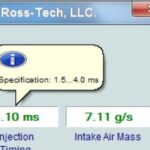The Diesel Particulate Filter (DPF) in your 3.0 TDI engine plays a crucial role in reducing harmful emissions. Understanding how DPF regeneration works, and how to use VCDS (Vag-Com Diagnostic System) to monitor and potentially initiate this process, is vital for maintaining optimal performance and longevity. This article delves into the intricacies of 3.0 TDI DPF regeneration, specifically focusing on utilizing VCDS for diagnostics and troubleshooting.
Understanding DPF Regeneration
DPF regeneration is the process of burning off accumulated soot particles within the DPF, converting them into ash. There are two primary types of regeneration: passive and active. Passive regeneration occurs naturally during sustained high-speed driving, typically on highways, when exhaust temperatures reach sufficient levels (350-500°C) to burn off the soot. Active regeneration, however, is triggered by the engine control unit (ECU) when soot loading reaches a certain threshold, usually around 45%. The ECU modifies engine parameters, such as injecting extra fuel post-combustion, to increase exhaust temperatures (above 600°C) and initiate the burn-off process.
The Role of VCDS in 3.0 TDI DPF Regeneration
VCDS provides valuable insights into the DPF’s status and regeneration process. Using VCDS, you can access specific data points related to:
- Soot Load: Monitor the current soot accumulation level within the DPF, expressed as a percentage. This allows you to track how close the DPF is to requiring regeneration.
- Regeneration Status: Determine if a regeneration is currently in progress, has recently been completed, or has been interrupted.
- Fault Codes: Identify any Diagnostic Trouble Codes (DTCs) related to the DPF system, such as sensors, pressure differentials, or regeneration failures.
- Forced Regeneration: In certain situations, and with caution, VCDS can be used to initiate a forced DPF regeneration. This should only be performed under specific conditions and with a thorough understanding of the procedure, as improper execution can potentially damage the DPF or other components. Consult reputable resources and guides before attempting a forced regeneration.
Monitoring DPF Regeneration with VCDS
To monitor DPF regeneration with VCDS, connect the interface to your vehicle’s OBD-II port and access the engine control module. Within the engine module, navigate to the “Measured Values” or “Advanced Measuring Values” section. Look for data channels related to “DPF soot mass,” “DPF regeneration status,” and “Exhaust gas temperature.” Observing these values will provide a clear picture of the DPF’s current condition and whether regeneration is occurring.
When to Consider a Forced Regeneration
A forced DPF regeneration might be necessary if:
- Frequent Short Trips: Continuous short journeys prevent passive regeneration, leading to excessive soot buildup.
- Interrupted Regenerations: Repeatedly interrupting active regeneration cycles can prevent the DPF from clearing properly.
- DPF Warning Light: If the DPF warning light illuminates on the dashboard, it indicates a significant soot load and potential issues with the regeneration process.
Caution: Before attempting a forced regeneration, diagnose any underlying issues contributing to DPF problems. Addressing these root causes is crucial for long-term DPF health. Furthermore, ensure the vehicle meets the necessary conditions for a forced regeneration, such as sufficient fuel level, adequate battery voltage, and a safe location to perform the procedure.
Conclusion
Understanding 3.0 TDI DPF regeneration and utilizing VCDS for diagnostics are essential for maintaining your vehicle’s emissions system and overall performance. Regularly monitoring DPF soot load and regeneration status with VCDS allows for proactive maintenance and can help prevent costly repairs. While VCDS offers the capability to initiate a forced regeneration, this procedure should be approached with caution and only after careful consideration and diagnosis. Consult reputable resources, guides, and potentially a qualified technician for assistance with DPF-related issues.

